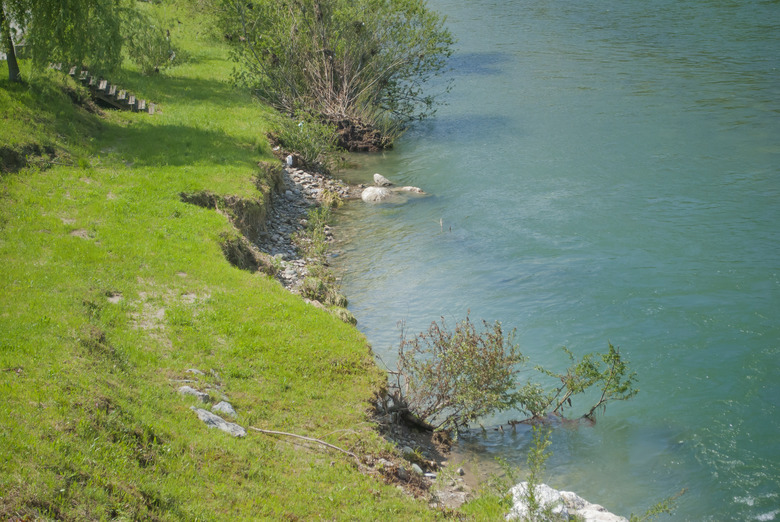How To Stop Creek Erosion
Creeks bring needed water to a landscape, but require proper maintenance to keep them from carrying away topsoil and otherwise destructively changing the stream bed. Human activity often disturbs natural bank stabilizers, causing natural erosion to burgeon out of control. Necessary preventative measures depend upon the size of the stream, climate, soil type and use of the surrounding property. As a rule, however, the best answer is to restore and support native vegetation along the creek bank.
Things Needed
- Pond
- Stock tank
- Earth-moving equipment
- Grass seeds
- Seedling trees
- Fencing
Step 1
Leave a buffer zone of trees and bushes along a creek bank when clearing land. The roots of established vegetation will help hold the soil at the water's edge, even when the creek is in full spate. These native plants will also provide habitation for native species.
Step 2
Provide ponds or tanks for animals to drink, and fence them away from the stream. Hoofed animals walking along the bank and wading down into the water cuts into the soil, causing it to crumble. Paths created by these animals also provide a channel for run-off, and frequently initiate new waterways in meadows. Keeping animals away from the stream will also protect them from up-stream pollutants.
Step 3
Plant shrubs, trees and grass along the edge of damaged creek banks. As much as possible, use native plants to prevent inappropriate growth that may turn into a spreading vegetation menace. Uphill from the stream, pasture fields lightly, and use contour plowing on those under cultivation. If the slope is severe, plow or drag ridges horizontally across the slope to act as terraces. Choose crops that will require minimal cultivation, such as orchards or berry patches.
TL;DR (Too Long; Didn't Read)
Check local zoning regulations before planting trees.
Warning
Heed extension office warnings about introducing certain plant species to an area.
Cite This Article
MLA
Fernchild, Daisy Peasblossom. "How To Stop Creek Erosion" sciencing.com, https://www.sciencing.com/how-8586998-stop-creek-erosion/. 22 November 2019.
APA
Fernchild, Daisy Peasblossom. (2019, November 22). How To Stop Creek Erosion. sciencing.com. Retrieved from https://www.sciencing.com/how-8586998-stop-creek-erosion/
Chicago
Fernchild, Daisy Peasblossom. How To Stop Creek Erosion last modified March 24, 2022. https://www.sciencing.com/how-8586998-stop-creek-erosion/
